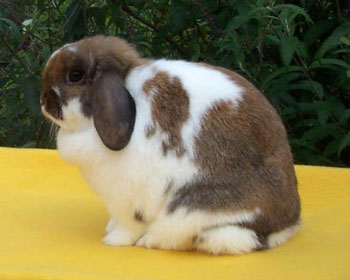Getting Babies out of a Tough-to-breed Doe
Please note: This is merely a story of one breeder’s experience. Authors at the Nature Trail are breeders, not vets, but try to help others out from their experiences. However, we recommend you consult a veterinarian before administering oxytocin or any other drug to your animals.
I recently got a doe back, GC The Nature Trail’s Belle. Let me take a moment to say that she was in great condition and obviously well cared for. Anyway, Belle has not been a great producer. So far, she had one kit for me and one for the other breeder.
 Normally, I wouldn’t spend any more time with a doe of that track record – been there, done that. But, in this case, I certainly have the cage space and I was down to just May, Hope, and Lexus for granded broken senior does.
Normally, I wouldn’t spend any more time with a doe of that track record – been there, done that. But, in this case, I certainly have the cage space and I was down to just May, Hope, and Lexus for granded broken senior does.
Here’s where the good record part comes in. My friend had kept wonderful records. I had Belle’s earlier records. From those accounts, I can see that Belle tends to have small litters and deliver her kits late. The one time she had a live one from me, she’d had 6 in the litter, which was the exception.
All of this leads me to believe that she has large kits and/or weak labor. By the time she passes them, they are all dead.
So, I’m using the information from her records to make a plan. I have never used oxytocin before, but I believe it is called for in her case. If she misses this time or has a dead litter, then I will make sure that I breed her on the full moon and breed her as many times as she will consent to, to try to increase her litter size. I will also keep her feed on the low side if she palpates positive, but with few kits, to keep the babies on the smaller side, hopefully.
So I have a plan. I don’t know whether it will work. But because there were good records, I can at least make a reasonable attempt to get babies from her.
(By the way, if I get daughters and they a problematic moms, then I will not repeat the effort to get babies.)
On day 30, I felt there was just one kit, so I decided to give the oxytocin that day, not wanting the singleton to get any bigger. So I gave the injection waited to see whether the kit would be born dead or alive. I knew it would arrive within 15 to 20 minutes, one way or the other.
Wrongo.
While it seemed there was some activity, after 30 minutes she was resting again and nothing had happened. So then I thought maybe she had a mummy or a tumor. I had been mistaken.
The Next Day
 The next day, day 31, I had planned to take my Convention rabbits to the vet for health certificates anyway, so I brought Belle along. (I decided to do the health certificates just to put minds at rest after the horrible summer I had.) My vet said he believed there was one kit also, and he administered oxytocin again.
The next day, day 31, I had planned to take my Convention rabbits to the vet for health certificates anyway, so I brought Belle along. (I decided to do the health certificates just to put minds at rest after the horrible summer I had.) My vet said he believed there was one kit also, and he administered oxytocin again.
Again, there was some huffing and puffing, and some clear contractions, but no baby. My vet palpated her again and said that the kit had moved forward, but that was all we got from the second dose. He said the uterus muscles were fatigued and nothing else would happen until they were rested again.
The next day I left for Convention. As I gave Andrew final instructions, I slipped in the part about having to give Belle another dose of oxytocin. He was not thrilled, to say the least.
 After I arrived in Grand Rapids, he called to get the dosage again. I thought, well since he waited all day to do it, the kit is surely dead.
After I arrived in Grand Rapids, he called to get the dosage again. I thought, well since he waited all day to do it, the kit is surely dead.
Apparently I didn’t emphasize the part about watching her for 20 minutes after the injection. He checked back later and found the baby on the wire.
However, it was still alive. Luckily, Andrew is well versed in reviving chilled kits. He got it warmed up and gave it to Padme, the only nursing doe in the barn.
Padme’s kit was already a week old and clearly overfed. Andrew checked the kit the next day. It was alive, but not full of milk. But by the next day, it was quite chubby and I was satisfied that things would work out.
Now, when the kit is nearly two weeks old, I’m a little concerned again. The first kit looks to be three weeks older than Belle’s, having gotten that huge jumpstart from overfeeding. It is on the wire and hopping in and out of the box. Sometimes it looks like Belle’s baby is going to be crushed by its snuggles. I just hope that Padme continues to visit the nest box and doesn’t start feeding her own on the wire. Belle’s baby needs to make it a few more days before going to the wire.
I’m extremely excited to have had this little success. I want to breed Belle again as soon as I have a couple of does to breed with her, in case she fails to make a nest again (she’s been a good mother in the past). It would be wonderful to have another broken senior doe in production, especially one with such nice fur and such a fabulous hindquarter.
I will try very hard not to let the use of oxytocin get out of hand. I think that overuse would eventually cost me the life of a doe. I will save the oxytocin for very special occasions and will be careful not to breed a line that is dependent on oxytocin for successful motherhood.
You can read more about Belle at the Gallery of Champions.

